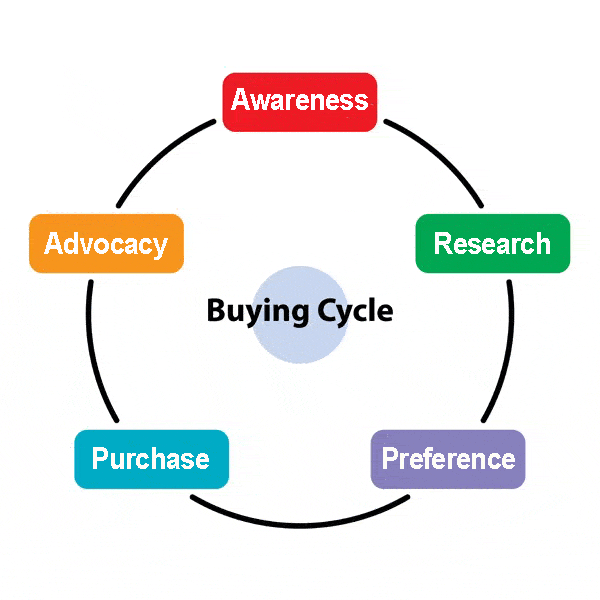How to Use the Buying Cycle to Structure Your Landing Page Content
Stephen Da Cambra
- 2 minutes
Your landing pages have a lot of work to do. Fortunately, you’ll find seemingly endless online advice about how to get it all done. From headline writing to Calls to Action, you can easily find all the online information you need to create effective landing pages.
Almost.
Where much of the advice about optimizing landing pages falls short and where many landing pages fail is in properly addressing the different stages of the consumer buying cycle that visitors might be in when they arrive on the page.
The good news is that you can easily solve the problem by using those same buying cycle stages to help structure your landing page content.
The basic stages of the buying cycle are:
- Awareness/Interest. The first stage begins when the consumer becomes aware of a need or otherwise develops an interest in a product. Online, it means they start googling and surfing around.
- Research/Consideration. After their initial look-see, consumers have developed a better idea of what they might want so they start deeper research and consider potential options.
- Preferences/Shortlist. Full of knowledge, they start identifying solutions to their needs and look for more information to confirm their direction.
- Purchase. This is it. They’re ready to go and they might arrive on your landing page with credit card in hand.
- Loyalty & Advocacy. Not usually part of traditional buying cycles, the web makes it a lot easier to follow-up with converted customers to maintain their loyalty and turn them into salespeople.
That’s it. You’re done. If you structure your landing page content in line with the stages of the buying cycle, it will have all the content elements of a successful page and you will appeal to visitors at every stage.
Here’s a template for your landing page content, based on the buying cycle:
- Benefit (capture awareness and interest). Right off the top of your page, list the one main benefit and/or unique selling proposition (USP) your customers should know before leaving the page. This grabs the attention of early stage buyers and reinforces the direction of later-stage buyers.
- Features/Secondary Benefits/Data (give them the research info they seek). This is where you back-up and add to point 1 with the information they might not have noticed in the first stage.
- Support Your USP (become a preferred option). Your USP should be interwoven throughout your landing page content, but to keep those who are almost ready to buy on the line, support your USP. For example: exactly why is your turnaround time 10% faster than the competition’s?
- Call to Action (get them to make the purchase). They’ve arrived with the intent, but that’s not always enough. This is where Calls to Action are important and they`ll be more effective if you use other strategies, like creating urgency, outlining guarantees and assuring privacy.
- Encourage Loyalty/Advocacy. From making it easy to share your content to offering incentives to return or to refer other customers; you’ll improve your bottom line if you stop thinking of it as “closing” a sale, and start thinking of it as creating a new salesperson.
Share This Article
Join 25,000+ Marketing Professionals!
Subscribe to Invesp’s blog feed for future articles delivered to receive weekly updates by email.



